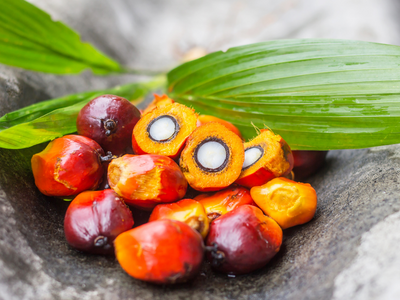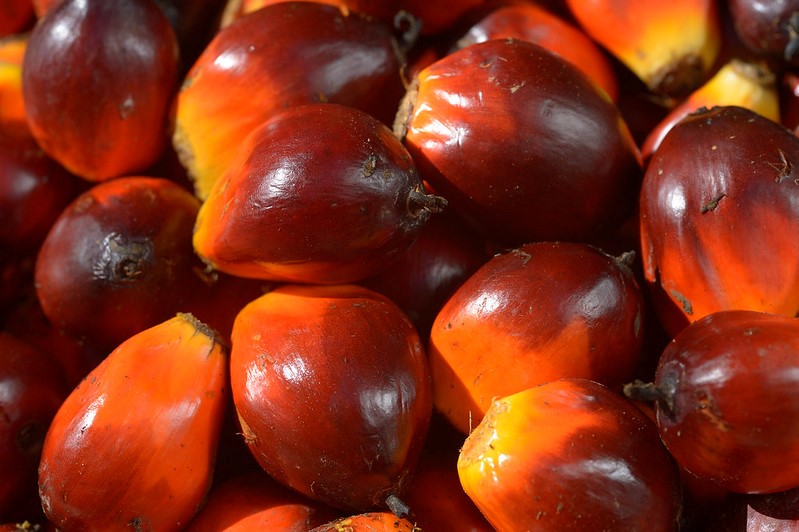
Expert in Palm Oil Processing Solutions
QIE Machinery

Expert in Palm Oil Processing Solutions
QIE Machinery

Expert in Palm Oil Processing Solutions
QIE Machinery

Expert in Palm Oil Processing Solutions
QIE Machinery

Palm oil is a vegetable oil that comes from the fruit of the palm tree. There are two different kinds of vegetable oils that can be harvested from palm trees; palm kernel oil (which is inedible) and palm oil (which is edible). Over the past couple of decades, palm oil has grown exponentially in popularity because of its wide variety of uses and extremely cheap production costs.

When compared to other vegetable oils, palm oil benefits from highly efficient agriculture production. One hectare of land planted with palm plants can produce up to 3.3 tons of palm oil, while the same acreage of soy would only produce 0.4 tons of oil.
Palm oil is considered to be the world’s most versatile vegetable oil. When compared to other vegetable oils, it has many desirable properties. It’s semi-solid at room temperature and has a lower melting point than other vegetable oils (like cocoa butter). When added to ice cream, it makes the ice cream melt slower. It’s a great foaming agent for soaps and detergents. It’s resistant to oxidation and can act as a natural preservative to help products last longer. Plus, palm oil is great for frying because it can withstand high temperatures.
Palm oil offers several potential health benefits due to its rich nutrient profile and antioxidant properties. It can be a source of vitamin A, vitamin E (including tocotrienols), and other antioxidants, which may contribute to brain health, heart health, and protection against cell damage. It can also be a source of healthy fats and may help with vitamin A deficiency. Additionally, palm oil is a good source of tocotrienols, a form of vitamin E that may protect the brain and reduce the risk of stroke.
Nutrient Content:
Vitamin A:
Palm oil, particularly red palm oil, is a good source of beta-carotene, which the body converts to vitamin A. Vitamin A is essential for vision, immune function, and cell growth.
Vitamin E:
Palm oil contains vitamin E, including tocotrienols, which act as antioxidants.
Other Antioxidants:
Palm oil also contains other antioxidants that can help protect cells from damage.
Healthy Fats:
Palm oil contains a mix of saturated and unsaturated fats, including monounsaturated and polyunsaturated fats.
Potential Health Benefits:
Brain Health:
Palm oil’s tocotrienols have shown promise in protecting brain cells, potentially reducing the risk of cognitive decline and stroke, according to Healthline.
Heart Health:
Some studies suggest that palm oil may have a cardioprotective effect by lowering LDL (bad) cholesterol and increasing HDL (good) cholesterol. However, results have been mixed, and it’s important to consume palm oil in moderation as part of a balanced diet.
Vitamin A Deficiency:
Palm oil can be a valuable source of vitamin A, especially in regions where vitamin A deficiency is prevalent.
Antioxidant Properties:
Palm oil’s antioxidants may help protect cells from damage caused by free radicals, potentially reducing the risk of chronic diseases.
1. Palm oil is made from the fruits of oil palm trees, grown in the tropics.
Palm oil is produced from the fruits of oil palm trees. Due to the specific conditions necessary for growing oil palm trees—plenty of sunshine, high temperature and rainfall, it can only be cultivated in tropical regions. The oil is extracted from the loose fruits of the fresh fruit bunches (FFBs). While the flesh of the fruit is used to produce palm oil, the inner seed is refined into palm kernel oil.
The leading producers of palm oil are Indonesia and Malaysia, jointly representing almost 85% of global palm oil production.

2. It is a resource-efficient, healthy and versatile ingredient.
Palm oil is the most resource-efficient vegetable oil. This is because oil palm trees require considerably less land to produce the same yield as compared to other oils. For example, every hectare of land that produces 0.7 tonnes of sunflower oil will be able to produce 3.8 tonnes of palm oil. The same quantity of land can produce more than five times the usual quantity of oil when it’s growing oil palm trees!
Not only is the yield greater but the nutrition content is much higher, in the case of palm oil. It is rich in antioxidants, namely vitamin E, which supports the immune system, prevents heart diseases and lowers the risk of cancer. Versatile and efficient, palm oil is a widely-used vegetable oil and a key ingredient for preparing a range of other products, from cakes to cosmetics.

3. Palm oil can be produced responsibly, using sustainable farming methods.
Despite its pros, the production of palm oil is infamous for being unsustainable. To clear land for oil palm plantations, forests need to be cut down. This has impacted some local communities and wildlife. And unfortunately, a lot of these forests are often cleared by using unsustainable methods like burning, which increase air pollution and soil erosion.
However, palm oil can be produced in an environmentally friendly manner. Farming can be sustainable if proper regulations and methods are followed for the sustainable cultivation of oil palm trees.
4. Palm oil is used for making a range of everyday consumables, from cakes to cosmetics.
Palm oil is the most versatile of all the different types of vegetable oil. It can be refined into a wide assortment of products carrying different physical characteristics, melting points and textures. The list includes food, cosmetics, biofuel, pharmaceutical products, and animal feed supplements.
It is most commonly used in pastries such as cakes and biscuits. It also comes in the form of margarine. Unknown to most, it can also be found in cosmetics like lipsticks. Rich in antioxidants (which reduce signs of ageing), palm oil makes an obvious choice for the cosmetics industry. That’s not all. Glycerine derived from palm oil can be used to manufacture pharmaceutical products, mainly cough syrups and oral care products. This multi-faceted ingredient can also be used to produce animal feed supplements.
5. Palm oil production is expected to increase further.
So, what next? With the rising number of people switching to a healthier plant-based diet, a simultaneous increase in the demand for vegetable-based oils, such as palm oil, is foreseen.
As reported by Oil World, the production of four vegetable oils—palm oil, sunflower oil, soybean oil, and rapeseed oil is expected to increase by around seven million tonnes in 2022.
Increased palm oil production does not have to result in negative impacts on the planet or people. Increasingly, regulators in Indonesia and customers around the world are demanding sustainably produced palm oil that is traceable to plantation. This focus on how palm oil is grown, encourages better agricultural practices resulting in higher yields per hectare. This enables farmers to grow more on the same area of land, with benefits for forest protection too. And while this growing need for transparency positively impacts farming practices globally, it also allows customers to learn about the real advantages of this otherwise unassuming ingredient.
Palm oil has been and continues to be a major driver of deforestation of some of the world’s most biodiverse forests, destroying the habitat of already endangered species like the Orangutan, pygmy elephant and Sumatran rhino. This forest loss coupled with conversion of carbon rich peat soils are throwing out millions of tonnes of greenhouse gases into the atmosphere and contributing to climate change. There also remains some exploitation of workers and child labour. These are serious issues that the whole palm oil sector needs to step up to address because it doesn’t have to be this way.
Palm oil is an incredibly efficient crop, producing more oil per land area than any other equivalent vegetable oil crop. Globally, palm oil supplies 40% of the world’s vegetable oil demand on just under 6% of the land used to produce all vegetable oils. To get the same amount of alternative oils like soybean, coconut, or sunflower oil you would need anything between 4 and 10 times more land, which would just shift the problem to other parts of the world and threaten other habitats, species and communities. Furthermore, there are millions of smallholder farmers who depend on producing palm oil for their livelihoods. Boycotting palm oil is not the answer. Instead, we need to demand more action to tackle the issues and go further and faster.
A: Palm oil may help protect brain function, reduce heart disease risk factors, and increase vitamin A levels in certain people.
A: Palm oil is made from the fruit of oil palm trees, specifically from the fleshy mesocarp of the fruit. The fruit is harvested and then processed to extract the oil. Two types of oil are derived from the fruit: palm oil from the mesocarp and palm kernel oil from the seed.
A: Palm oil’s benefits are based on its antioxidant properties, which have been shown to protect against cell damage. The oil also contains unsaturated fats, which may protect against heart disease.
A: What is the problem with palm oil? Palm oil has been and continues to be a major driver of deforestation of some of the world’s most biodiverse forests, destroying the habitat of already endangered species like the Orangutan, pygmy elephant and Sumatran rhino.
A: Palm oil is rich in tocotrienols (T3s), a type of vitamin E that has garnered considerable research interest as it exhibits anti-inflammatory as well as antioxidant characteristics that are comparable to or exceed those of tocopherols (Toc). Notably, T3 must be consumed as it cannot be produced by the human body.
A: When taken by mouth: Palm oil is commonly consumed in foods. But palm oil contains a type of fat that can increase cholesterol levels. So people should avoid eating palm oil in excess. Palm oil is possibly safe when used as a medicine, short-term.